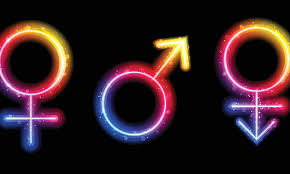A list of online resources for transgender people and their family and friends

Culture and community
The site is run by volunteers and a not for profit organisation We are the most up to date resource for the UK and online based support groups; users can find a local group and even message them directly from our site using the "Contact Group" button. We don't store any details and the site is secured by SSL.
We're verifying and adding groups on an ongoing basis with our next focus being online groups with Discord Servers, Telegram and Facebook groups becoming increasingly popular to compliment those that meet up in person.
The Angels
Forum 'supporting the TG community'.
Club Wotever
A London bar space for trans, queer, LGBT people and their friends, with an emphasis on queer/trans performance.
Deep Stealth Productions
Founded by Calpernia Addams and Andrea James, Deep Stealth strives for positive media representation of trans people.
Gendered Intelligence
Creative workshops, arts programmes, conferences and youth group sessions.
Meta
'A unique digital magazine which brings you the very best of trans and genderqueer news, advice and entertainment'.
Sparkle
The 'national transgender celebration' which takes place in Manchester every year.
Trans Media Watch
Aims to combat prejudiced or sensationalist media reporting of trans issues, and offer advice to people or organisations.
Transfabulous
Former London-based organisation devoted to transgender performance art, with an interesting archive.
Transfriendly
Online forum for the trans community.
Female-to-male (FtM)
FTM International
A comprehensive website for the female-to-male community, offering information about healthcare, law, events and family support.
FTM Network
A British-based site acting as a friendship/support group for FtM transgender and transsexual people.
FTM Resource Guide
For trans men and friends, with tips on hormones, grooming, clothing, surgery and more.
FtM UK
UK-based FtM lifestyle forum.
Original Plumbing
US magazine 'dedicated to the sexuality and culture of FtM trans guys'.
TransGuys
'The internet's magazine for transgender men'.
History and politics
The Empire Strikes Back
Trans woman Sandy Stone's spirited rebuttal of Janice Raymond's book The Transsexual Empire (1979). This essay is one of the key texts of the 90s trans rights movement.
Genderqueer Revolution
For people beyond gender binaries.
Gender Variance Who's Who
'Essays on trans, intersex, cis and other persons and topics from a trans perspective'. Includes plenty of further reading, with a list of international trans resources.
Intersex UK
Committed to human rights for intersex people.
Just Plain Sense – The Trans Tapes
Interviews by Christine Burns with a variety of trans people.
Press For Change
Political lobbying and educational organisation campaigning for equality and human rights for British trans people through legislation and social change. The original website is archived here.
Sylvia Rivera Law Project
US-based organisation seeking to raise the voices of marginalised trans people.
Trans London
London discussion group.
Transgender Day of Remembrance
Observed every 20 November to commemorate victims of transphobic violence.
Women Born Transsexual
'For people who recognise transsexualism as an innate condition rather than a gender identity disorder'.
Medical services and healthcare
A discussion group for those who have used the Gender Identity Clinic at Charing Cross.
Mind OUT
Service for LGBT (lesbian, gay, bisexual, transgender) people with mental health concerns.
National archives – Gender Identity
Department of Health documents relating to gender identity.
NHS Choices
The NHS page on gender dysphoria, covering terminology, symptoms and treatment.
Trans Health
Magazine covering health and fitness issues.
Transhealth UK
The London Gender Clinic, the UK's largest private service.
World Professional Association for Transgender Health (WPATH)
Professional organisation devoted to 'the understanding and treatment of gender identity disorders'. Originally named after pioneering physician Harry Benjamin, WPATH produces the ethical guidelines and standards of care for professionals working with patients with gender identity issues.
Support groups and information
The Beaumont Society
National self-help body run by and for those who cross-dress or are transsexual, and for their partners.
Clare Project
Brighton-based support group 'open to anyone wishing to explore issues around gender identity'.
Depend
Support group for families and friends of transsexual people in the UK.
Gender Identity Research and Education Society (GIRES)
Information for trans people, their families and medical professionals.
Gender Trust
Organisation which supports adults whose lives are affected by gender identity issues, as well as families and employers of transsexual or transgender people.
Mermaids
Family and individual support for teenagers and children with gender identity issues.
Scottish Transgender Alliance
Support for trans people, equality organisations, policymakers and employers in Scotland.
Susan's Place
A comprehensive collection of online transgender resources, allowing people to add links/information themselves.
Trans Resource & Empowerment Centre
Based in Manchester, with monthly meetings, talks and workshops.
Transgender Zone
Comprehensive website including medical information, a guide to venues and opinion about transgender representation in the media for both MtFs and FtMs.
Transsexual Road Map
An excellent free guide to process of transitioning, and the social issues around it.
Courtesy of Juliet Jacques guardian.co.uk, Thursday 29 November 2012



